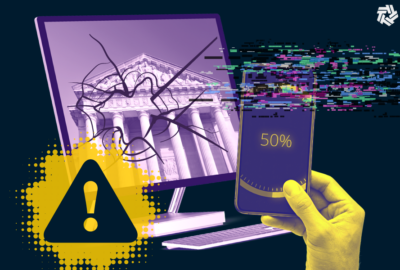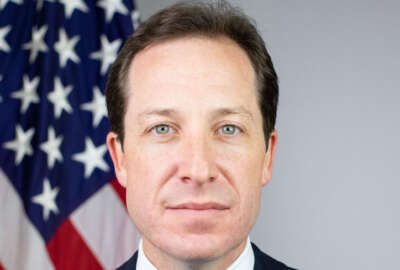Agencies release over 300 actions to advance equity in federal services
Over 90 agencies release 300 new actions aiming to expand opportunities in federal services for disadvantaged communities.
More than 90 federal agencies are releasing a combined total of 300 new actions to address barriers to equity in federal services.
Each agency’s equity action plan targets specific ways to support underserved groups. That includes communities of color, as well as tribal, rural and LGBTQI+ communities, along with people with disabilities, women and girls and communities disproportionately impacted by poverty.
The White House compiled all of those strategies in a new outline, highlighting the interagency approach to its equity goals.
Following an executive order from January 2021 calling on agencies to advance racial equity, those departments are now laying out their concrete strategies, according to a fact sheet released on April 14.
“More than 90 agencies answered that call from every major cabinet level agency, to smaller entities,” Director of the Domestic Policy Council Susan Rice said during a White House event on Thursday. “This was truly a whole-of-government endeavor. Collectively, these equity action plans will grow federal investment and support in communities that have been locked out of opportunity for far too long.”
The White House tasked the Office of Management and Budget to partner with agency heads to assess the equity of federal policies and actions.
OMB Director Shalanda Young said that along with those partnerships, there are several key areas where OMB is implementing the administration’s equity advancements.
“We’ve shared resources we collected online, and we created an equity learning community to support agencies as they develop their equity action plans,” Young said at the event.
The fiscal 2023 budget request also makes critical investments in equity, Young said.
For example, the funding request “restores resources to oversee and enforce the equal employment obligations of federal contractors, including protections against discrimination based on race, gender, disability, gender identity, and sexual orientation,” the White House budget request stated.
OMB has also built toward this goal by directing agencies to study barriers to federal customer experience. In a memo that OMB published on April 13, the administration told agencies to identify and then reduce burdens to accessing federal services.
The guidance from OMB falls under several of the president’s executive orders last year, including looking to improve customer experience in government and create a White House Gender Policy Council.
Young additionally said that OMB is working to improve the delivery of federal services to all Americans, tying back to the President’s Management Agenda. In particular, it related to PMA’s goal of delivering excellent, equitable and secure federal services and customer experience.
“We’re doing this in part by focusing on life experiences, how people actually live their lives. Families should not have to navigate a tangled web of government websites, offices and phone numbers to access the services they depend on,” Young said.
OMB also announced that it’s adding more funding and talent opportunities, like those from the U.S. Digital Service, to get more equitable help delivered to underserved communities.
The White House’s announcement of these agency strategies ties to its recent actions on addressing inequities for transgender Americans, as well as the LGBTQI+ community as a whole.
Adding opportunities for small, disadvantaged businesses
Under the equity action plans, many agencies are looking at ways to redistribute federal contracting dollars. That will provide more support to small and disadvantaged businesses, while breaking down barriers for historically underserved communities. Agencies’ plans aim to increase the share of federal procurement opportunities for those groups.
“Agencies are expanding equitable procurement opportunities to implement the president’s commitment to increase federal investment in SDBs by 50% — an estimated additional $100 billion — by 2025,” the White House said.
That includes actions such as providing better information about contracting opportunities, through communication channels that are accessible to a broader range of communities.
Administrator Isabel Guzman at the Small Business Administration said that after helping small businesses survive the pandemic, the agency now plans to deliver more equitable distribution of federal contracts.
“New business applications are up 30% over pre-pandemic levels. Women and people of color are starting businesses at the highest rates. It’s a pivotal moment to finally address the capital gaps and opportunity gaps that hold back too many of our underserved entrepreneurs,” Guzman said in a White House event on Thursday.
SBA reported in a summary of its equity action plan that small and disadvantaged businesses represented 25% of all businesses that participate in federal contracting. But, those small businesses received roughly just 10% of total dollars for federal procurement.
“We want to open doors to government contracting, especially growing the support chain with small, disadvantaged businesses,” Guzman said.
The Department of Defense said it also plans to expand contracting with small businesses from underserved communities. In its equity action plan summary, the department highlighted complex compliance requirements and unclear communication as roadblocks to those businesses entering federal contracts.
DoD said it “will set, resource and implement a galvanizing goal around advancing opportunities for prime and subcontractors who are members of underserved communities; advance equity through requirements on wage setting and labor practices in the department’s contractor workforce and supply chain; and empower small business programs and initiatives to lead policy and management practices across the department.”
Among several other agencies working to expand federal procurement opportunities to small and disadvantaged businesses, the National Science Foundation said in its action plan summary that it will target diverse suppliers and work to address those barriers.
“NSF will launch a new suite of engagement activities to support underrepresented institutions effectively do business with NSF, introduce these institutions to program office staff and improve communication with underrepresented institutions,” the summary stated.
To add to those efforts, the White House said that it will invest in small disadvantaged businesses, including minority-owned businesses, with $100 billion in additional funding over the next five years. That funding will build on reforms that the White House announced in December for the federal procurement process.
Improving technology, collecting better data
Investing in technology is another major priority for many agencies to advance equity in their services.
As part of its equity action plan, DoD said it’s focusing on improving its use of artificial intelligence.
DoD added that the technologies it uses, such as machine learning, can potentially magnify existing inequities.
Along with technology, many agencies are focusing on making better use of data to provide more equitable federal services.
In their equity action plans, several agencies said they are increasing investments in demographic data to better improve their services and customer experience outcomes.
For instance, SBA said it will focus on improving and analyzing data for contracting disparities by spending more on technology. The agency said it will invest in technologies including LenderMatch and the Community Advantage Pilot, to increase access to capital for businesses in underserved communities.
At the Department of Veterans Affairs, the agency announced that it’s launching a Data for Equity strategy that will synchronize data on healthcare, disability and other veterans’ services to identify and eliminate disparities for underserved veterans.
The State Department said that it will additionally focus on improving the collection and analysis of data.
“The State Department is increasing engagement with partners from underserved racial and ethnic communities, applying new equity analyses and improving demographic data collection and analysis to better embed equity and gender equality into U.S. foreign policies,” the White House fact sheet stated.
As part of advancing equity through data collection and reporting, the White House also created the Equitable Data Working Group.
The working group will “use demographic data to make better policy and deliver better results for the American people,” Rice said.
The White House said it will release initial recommendations from the working group in the coming weeks.
Copyright © 2024 Federal News Network. All rights reserved. This website is not intended for users located within the European Economic Area.
Drew Friedman is a workforce, pay and benefits reporter for Federal News Network.
Follow @dfriedmanWFED






